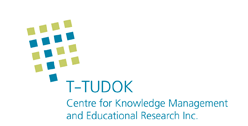How the best performing school systems come out on the top?
The reports executive summary:
Education reform is top of the agenda of almost every country in the world. Yet despite massive increases in spending (last year, the worlds governments spent $2 trillion on education) and ambitious attempts at reform, the performance of many school systems has
barely improved in decades. This is all the more surprising because there are wide variations in the quality of education. For instance, in international assessments, less than one percent of African and Middle Eastern children perform at or above the Singaporean average. Nor is this solely the result of the level of investment. Singapore, one of the worlds top performers, spends lesson primary education than do 27 of the 30 countries in the OECD. Changing what happens in the hearts and minds of millions of children. The main charge of any school system is no simple task. That some do so successfully while others do not is indisputable. So why is it that some school systems consistently perform better and improve faster than others? There are many different ways to improve a school system, and the complexity of this task and the uncertainty about outcomes is rightly reflected in the international debate about how this should best be done. To find out why some schools succeed where others do not, we studied twenty-five of the world?s school systems, including ten of the top performers. We examined what these high-performing school systems have in common and what tools they use to improve student outcomes.
The experiences of these top school systems suggests that three things matter most: 1) getting the right people to become teachers, 2) developing them into effective instructors and, 3) ensuring that the system is able to deliver the best possible instruction for every child.
These systems demonstrate that the best practices for achieving these three things work irrespective of the culture in which they are applied. They demonstrate that substantial improvement in outcomes is possible in a short period of time and that applying these best practices universally could have enormous impact in improving failing school systems, wherever they might be located.
You can download the full report here.








